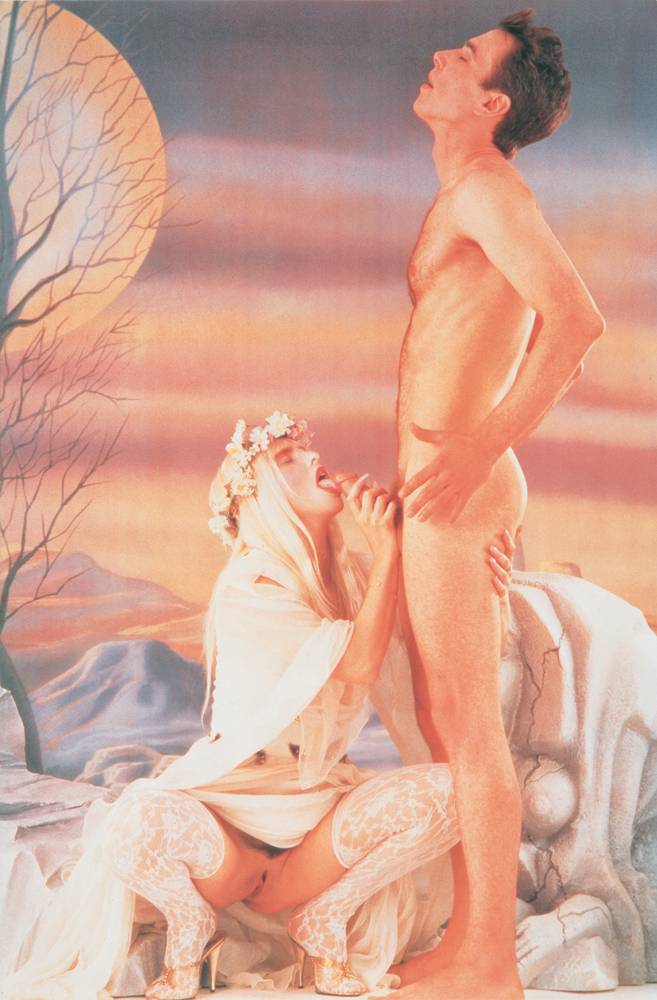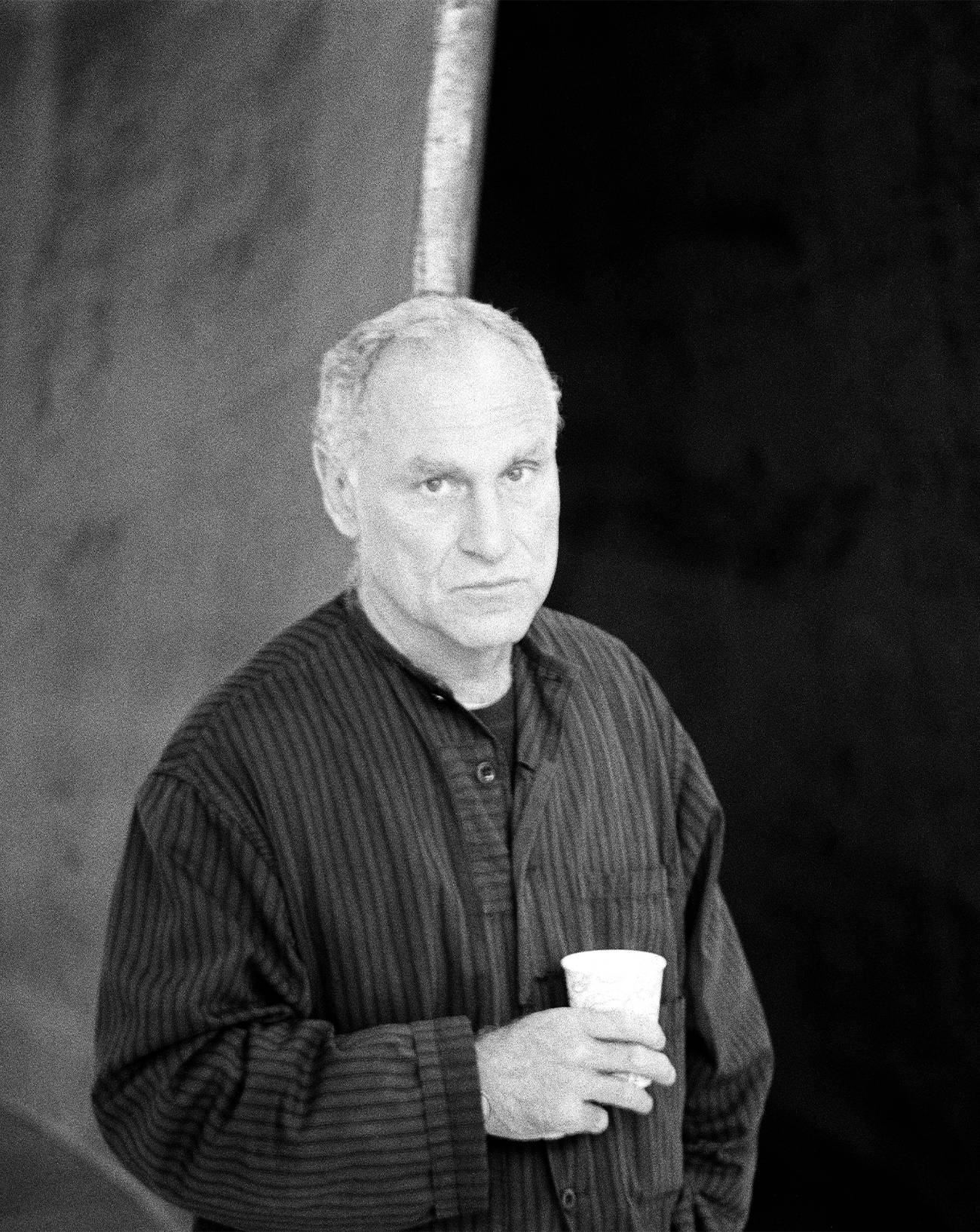

Warning: The following post contains images that may be disturbing to some readers.
From a woman’s bust to the decriminalization of pornographic images
The story begins in 1937 with the surrealist sculptor and painter Wilhelm Freddie and his work Sex-paralysappeal: a bust of a woman whose head is crossed by a male sex (on the cheek). Two glasses of wine are hung on a rope that strangles her. This woman is seen as a figure of debauchery and excess, whereas the artist wishes to express the numbness of her unconscious - especially since at the time, as far as the deciphering of human psychologies is concerned, Freudian psychoanalysis was on the rise.
This woman is seen as a figure of debauchery and excess, whereas the artist wishes to express the numbness of her unconscious.
The sculpture imitates the “classical” form (the ancient bust), while being nevertheless destitute of its lifting aspect, perverted by the erotic fantasy. This work was presented as part of Sex-surreal - Pull the fork out of the eye on the butterfly (1937), an exhibition that became a real manifesto from its opening in Copenhagen. The event was a shock. Visitors described the works as “immoral” and denounced them to the authorities: the Danish national police confiscated most of them, the others were destroyed by groups of prudish young students.

Cindy Sherman, “Untitled #253”, photograph (1992). Courtesy of the artist, Sprüth Magers, Berlin, and Metro Pictures, New York. © Cindy Sherman.

Valie Export, “Aktionshose, Genitalpanik”, photograph on aluminium (1969). Courtesy of Valie Export. © Valie Export, Bildrect Vienne (2019), photo Peter Hassmann.
Later on, in 1963, artist Arthur Køpcke, from the Fluxus movement, opened his gallery in Copenhague and invited Wilhelm Freddie. The latter went to court several times, demanding that his works be returned to him. He was not successful and then presented copies of these same works - which were in turn seized. The case got bigger when part of the Scandinavian artistic community began to question these decisions, which were considered too harsh. It was not until 1967, under public pressure, that the artist finally recovered his productions. Two years later, in 1969, Denmark became the first country in the world to decriminalize pornographic images in the arts.
Two years later, in 1969, Denmark became the first country in the world to decriminalize pornographic images in the arts.
Historians are unanimous: the Wilhem Freddie episode probably helped to lift the censorship of pornography in Denmark. But this story raises several questions: is art capable of shaping mentalities? Can it transform transgressive and immoral images - here pornography - into something legal?


Art, sex and feminine pleasure
Women are the first ones to use sexual images in order to ovethrow the phallocentrism and masculinism of society. Pornographic images crystallize the power relationships between the dominant (man) and the dominated (woman). In 1969, Valie Export, one of the great figures of Viennese actionism, entered a pornographic cinema, wearing leather trousers open at the crotch and threatened the men with a machine gun. A real genitalia was available to them, why not enjoy it directly?
A real genitalia was available to them, why not enjoy it directly?
Five years ealier, Carole Schneemann, who died last March, showed in her video Fuses (1964) twenty minutes of sexual intercourse with her partner of the time. The artist worked the film as a work of art that she burned, painted and cut. Schneemann showed sexual pleasure, its enjoyment, its beauty, and changed the supposed position of “procreative woman” to that of “creative artist”.

Jeff Koons, “Blow Job-Ice”, oil inks on silk screened on canvas (1991). Astrup Fearnley Collection, Oslo.

Jeff Koons, “Wolfman (Close-Up)”, oil inks on silk screened on canvas (1991). Astrup Fearnley Collection, Oslo.
The Made In Heaven series, a resounding phenomenon of the Reagan years, openly breaks the boundary between art and pornography.
An unparalleled event upon its release, Fuses by Carole Schneemann allowed artists to move towards productions that flirted with pornography. But these subversive artistic productions were still shocking. In 1989, in a New York gallery, Jeff Koons presented his Made In Heaven series, produced with the Italian porn star (at the time a member of the Italian Assembly), the "Cicciolina" - his own wife. In this opulent series, the tanned and oiled up young couple indulges in unrestrained sexual intercourse. This series, a resounding phenomenon of the Reagan years, openly breaks the boundary between art and pornography.

Betty Tompkins, “Fuck Painting #31”, canvas painting (2009). Private collection © Betty Tompkins.

Tom of Finland, “T.V. – Repair”, pen, ink, gouache and cut-and-pasted photo on paper (1972). Courtesy of David Kordansky Gallery, Los Angeles. Photo by Brian Forrest.
When porno and the queer question meet
Sexual organs spread in art from the 1960s to the present day, and often became allegories of social struggles. In the 1970s, the international gay community discovered the powerful and evocative drawings of Touko Valio Laaksonen, better known as Tom of Finland. At a time when homosexuality was being repressed worldwide, the gay community found in these works the free expression of homoerotic fantasies that are supposed to remain hidden. Tom of Finland’s pornography has undoubtedly played a decisive role in the depiction of homosexual scenes, and shows how much sexual freedom goes hand in hand with individual freedom.
Tom of Finland’s pornography has undoubtedly played a decisive role in the depiction of homosexual scenes, and shows how much sexual freedom goes hand in hand with individual freedom.
The pornographic image remains a reflection of the clichés that weigh on our societies. In his video The Fall of Communism as Seen in Gay Pornography (1998), artist William E. Jones undermined the Western fantasy of the Soviet man. The video showed castings of young men from Eastern Europe, obviously compelled to sell their bodies for money due to their social situation. The disturbed expressions on the faces of these young men - uneasiness for the viewer, excitement for the casting director - evoked a violent, dark but authentic image of the making of X films.


Sexual freedom goes hand in hand with freedom of speech
The issue of pornographic images is intrinsically linked to the issue of freedom of speech. Wilhelm Freddie’s example shows that going against bourgeois norms changes minds. In the artist Sarah Lucas’ work, individuals, male or female, are reduced to their sexual organs. In the exhibition, a giant phallus crashes into a compressed car; an installation that humorously denounces the sexual and consumerist impulses of the standard man. In this rich body of work, the idea of these artists is not to present the cathartic reality usually produced by porn, used here for other purposes. The exhibition truly reflects the rich complexity of the relationship between art and sexuality or, by proxy, pornography.
The Art & Porn exhibition is on display at the ARoS Museum in Aarhus, Denmark, until Septembre 8.










